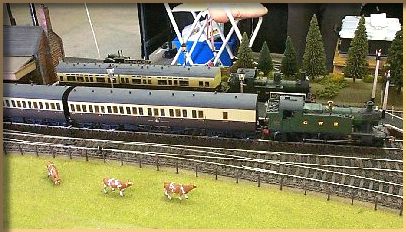After the head had been removed to get to the head gasket for a template for the new ones, and sent away for skimming and the valves rebedding, Keith and Roger blocked of the cooling system within the block and then filled it with water. This was then left for a few days to see if the wet liners were leaking. A wet liner is a cylinder that fits inside the engine block within which the piston slides up and down. It is wet because it is internally exposed to the water jacket to greatly increase the cooling effect. However it does mean that a water seal has to be present at the bottom of the liner to prevent water from dripping into the oil sump. After a few days the water level had dropped and there were damp patches on the paper towels they had left under the cylinders. Keith took the decision to take the liners out and get them checked, he felt there was no point in only doing half a job on the engine having got this far.
It took Roger and Keith a whole day to remove both pistons in preparation to remove the liners. It was a learning curve for both of them as without any form of manual on the engine they had to guess each stage. Fortunately having spent many hours stripping down car engines when Keith used to do rallying in his younger days this came in useful. They took each step slowly checking everything as they went. Although there are access panels on both sides of the engine to the crankshaft area, there is not a lot of room. One of the hardest parts was getting the split pins out of the big-end blots, but enventually they came out, and so did each piston and crank. Initially they undid the big ends and lifted the pistons up to be able to remove the pistons rings. This then gave them more leeway to drop the pistons back down the cylinders and out through the crank casing.
The following morning Roger made a liner puller, which worked very well. Pulling the liners out was the bit they were dreading, yet it ended up being the easiest part, hahahahaha.
As can be seen the liners could do with a good scrub down. This being the part of the liner exposed to the water jacket.
The exposed water jacket could also do with a good clean out. It took quite a while to get the inside of the water jacket all cleaned out, but it will be worth it as it will allow the water cooling to be far more effective.
The liners needed a good clean up to be able to inspect their condition. During this clean up they discovered that where we had expected an 'O' ring at the bottom of the liner to create the water seal, there was none. Instead there appeared to be the remains of silicone sealant! Keith was glad he decided to do this stage, it could have proved disasterous if this rough seal had failed and dumped the coolant into the oil system, especially whilst on a river, or even worse, tidal waters!
Now doesn't that look better. below his left hand, the one with the watch on, can be seen the groove in which the 'O' ring should sit. Having got everything all cleaned up, Roger then delivered the liners, pistons and cranks to Allards In Stoke-on-Trent, so that work could be carried out on them. At the worst we may have to have the liners bored out and sleeved as they have worn, a lot depends on what they decide to do after measuring everything.
This tidy pile was what was scraped out of the water jacket once they had got the liners out. Keith thinks this engine is going to sigh a huge sigh of relief when they 1st start it up when it is all back together, and if it could speak we are sure it would thank us for allowing the cooling to cool it properly, bit like for us enjoying a cold shower on a hot day! With the pistons and cranks out of the way access to the sump is now easier, and having removed the oil suction unit, they could now get fully inside and clean out all the emulsified oil and other muck. The oil suction unit cleaned up nicely. This unit lies in the bottom of the sump and is at the lower end of the oil pump, it filters out large lumps from the oil before it is sucked up from the sump into the pump. We now just have to wait for the liners, pistons and cranks to be returned and the long awaited gaskets to arrive when they are ready.
The Oil Suction Unit.



































 Viewed from the Basin.
Viewed from the Basin.














